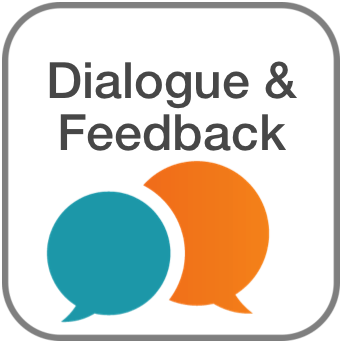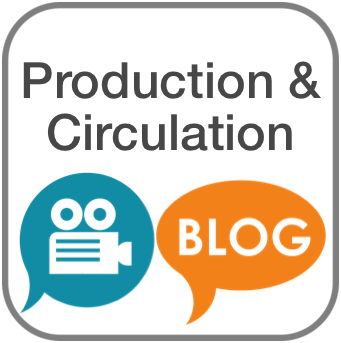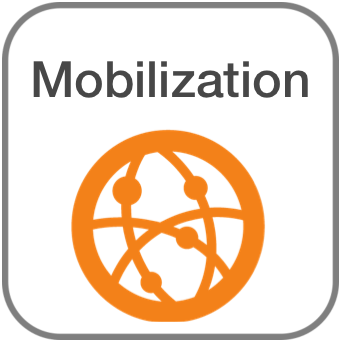Dialogue & Feedback — Youth engage in dialogue, learn about multiple perspectives, and give feedback to elites on issues of public concern.
The affordances of digital media have greatly expanded youth opportunities to engage in discussion with those who hold differing perspectives, to argue for their points of view, to comment on civic and political issues outside of formal structures and institutions, and to express feedback to government agencies, corporations, and other organizations. The number of youth taking advantage of these opportunities for dialogue and feedback in and out of school is growing. Fifty-four percent of 18-24 year olds who use the Internet engaged in dialogue related to politics online in 2012, up from 43% in 2008 (see reference 1).
Many scholars have expressed concern, however, that dialogue often occurs within an echo chamber, where individuals engage mostly with those who share their views (see 2). In addition, the desire to gain attention coupled with the anonymity provided by many online platforms may lead to more frequent troublesome exchanges. For example, 39% percent of all youth, including 45% of African American and 47% of Latino students, on our 2011 YPP Survey reported seeing or experiencing racist statements and interactions online (see 3).

Thus, while providing opportunities for face to face discussions of controversial civic and political issues in contexts moderated by educators has long been and continues to be a best practice by civic educators (see 5), additional learning opportunities will be needed to support youth to navigate and address the risks, as well as take advantage of the expanded opportunities with online dialogue and feedback.
EPP Resources with a Dialogue & Feedback Focus
-
Dialogue Module from the Digital Civics Toolkit for Educators
-
Civic Discussion collection from the Teaching Channel’s Educating for Democracy Deep Dive
-
From Theory to Practice: Examples of Digital Media in Civic Education (BYP)
-
Research & Blogging Lesson, 11th grade, by Lisa Rothbard (EDDA)
-
Related Blog Post - Writing, Research, and Youth Voice
- Selected Lessons (GP/FHAO):
For an expanded discussion of this and other EPP practices see:
Redesigning Civic Education for the Digital Age: Participatory Politics and the Pursuit of Democratic Engagement by Joseph Kahne, Erica Hodgin & Elyse Eidman Aadahl
Dialogue & Feedback
| Common Historical Practices | Expanded Practices in the Digital Age | New Opportunities for Youth | Potential Risks | Implications for Educators |
|---|---|---|---|---|
|
For youth, dialogue about social issues occurred either in private circles with family and friends or with peers in school. |
There are increased opportunities for feedback in online forums, such as commenting on news websites, creating online petitions, and generating viral campaigns intended to pressure a representative. |
Youth have increased opportunities to engage in dialogue and feedback outside of structured forums and institutional contexts. |
Youth only engage in spaces and dialogue with like-minded individuals, called echo chambers (see 2). |
Support youth to engage in: Expressing one's perspective persuasively in a digital format |
|
Structured forums for dialogue and feedback primarily happened at specified times and locations, such as town hall or school board meetings. |
Dialogue about social issues can occur with a broader range of people in online spaces, such as Facebook, Twitter, chat rooms, etc. |
There are expanded chances for youth to voice their opinions and perspectives to a wide audience. |
Incivility and offensive dialogue can dominate online dialogic spaces that are not regulated by clear norms or guidelines and where anonymity is common.
|
Sharing one's point of view with respects and civility when there is no face-to-face relationship |
|
Many opportunities for feedback - such as voting, calling one's representative, or writing a letter to the editor - were structured by institutions. |
|
|
In an effort to draw attention, everyday experiences of ordinary lives and struggles can be crowded out by sensationalized accounts (see 6). |
Tapping social networks to engage in dialogue with people with diverse perspectives |
|
|
|
|
|
Reflecting on the impact of dialogue and expression on their own identity while being aware of the risks of disclosure, online bullying, and echo-chambers |
For a Printer Friendly version of the above charts, click here: Redesigning Civic Education for the Digital - Charts
References
1. Smith A., Schlozman K. L., Verba S. & Brady, H. (2009). The Internet and civic engagement. Pew Internet & American Life Project.
2. Sunstein, C. R. (2007). Republic.com 2.0. Princeton, NJ: Princeton University.
3. Cohen, C., & Berk, C. (2015). Re-thinking the digital divide: Participatory politics and equality in the digital age. Manuscript in preparation.
4. Weinstein, E., Rundle, M., & James, C. (2015). A hush falls over the crowd?: Diminished online civic expression among young civic actors. International Journal of Communication, 9(2015), 84-105. Retrieved from http://ypp.dmlcentral.net/publications/220.
5. Hess, D. E. (2009). Controversy in the classroom: The democratic power of discussion. New York, NY: Routledge.
6. Soep, E. (2014). Participatory politics: Next-generation tactics to remake public spheres. Cambridge, MA: MIT Press. Retrieved from http://ypp.dmlcentral.net/publications/201.











